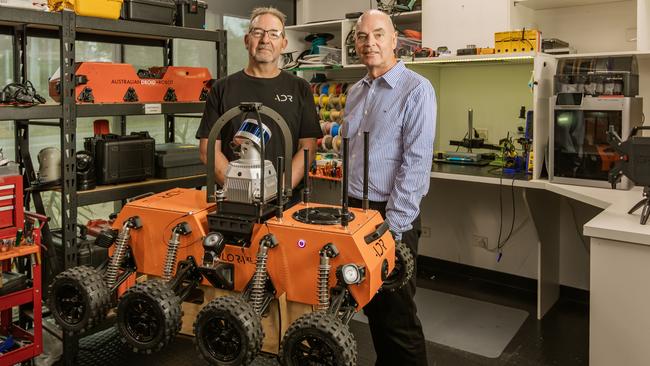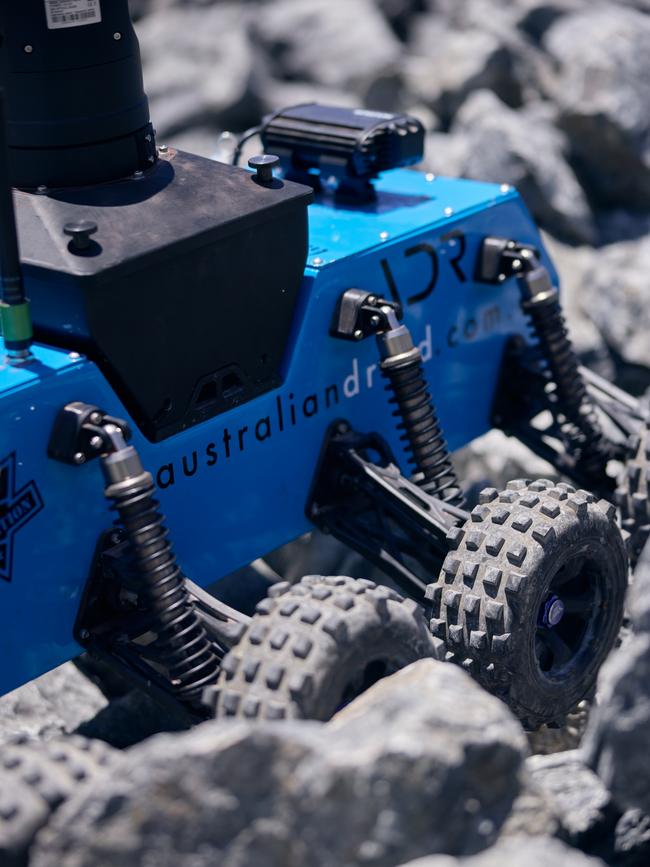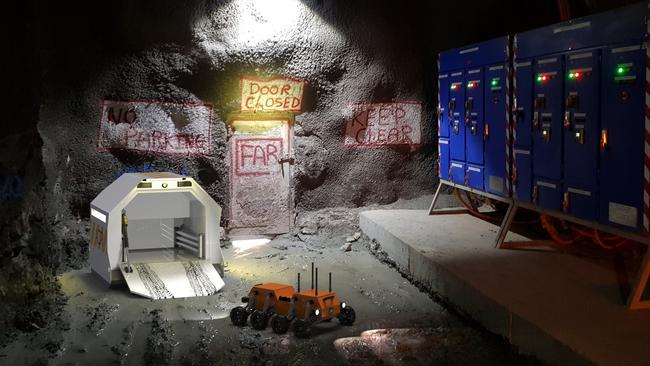Brisbane start-up ADR raises $2m to expand production of an eight-wheeled mining robot
Brisbane start-up ADR, which remotely examined the collapsed Lhoist North American limestone mine in 2021, has raised $2m to expand its robot fleet.

A Brisbane start-up, which was contracted to send its robots into the Lhoist North American limestone mine to find out why it collapsed in 2021, has raised $2m.
Australian Droid and Robot (ADR), founded by a former Rio Tinto project manager with a PhD in robotics, has picked up BHP and Rio as customers for its new data-collecting robot.
The robots are built to work in harsh conditions, operating in dark and dirty environments to collect data and take measurements alongside machinery without having to stop operations. They weigh about 30kg and have dozens of sensors.
The idea behind the start-up came from its founder’s time at Rio Tinto, where had worked on projects such as autonomous trucks and loaders.

“We always had to turn those systems off to allow people to go in like geotechs and mining engineers who do regulatory and operational measurements,” founder Joe Cronin said.
“Other times I often saw across the industry that people were putting themselves in harm’s way to work out when things went wrong … I thought to myself that we could do these with robots.”
When he set out to test the theory, he took military robots used in countries like Afghanistan which had been used to examine improvised explosive devices (IEDs) and then tested their functionality underground.
“I borrowed some military robots, I stuck a big light on them and a camera and sent them in and they just did not last in the underground environment,” Dr Cronin said.
ADR then developed its own robots at its facility in Taringa, a suburb about 8km southwest of the Brisbane CBD.
Those robots have been able to travel 1.7km underground and still perform effectively. They showcased, for the first time, in the US in 2021 when the century-old limestone mine in Tennessee collapsed.
The collapse created catastrophic airblast travelling at 290km/h. It was deemed too unsafe for people to inspect and ADR received a $500,000 contract to send 10 robots inside under the control of its engineering manager of software, Andre Preller, and product manager Callum Macdermid.
“When the team got there the whole town was waiting for them and was relying on them because that’s where everyone was employed,” Dr Cronin said.

He said the mine was open within a week and, as a result, ADR was able to garner interest among different mines.
Leading the $2m raise was Resource Capital Funds which backed plans to launch an “Explora Remote Data Acquisition System” docking station that will house the robot underground. The new system will launch in 2025.
RCF partner, Lyle Bruce, said the firm backed ADR’s vision to make mining “safer, cleaner, and more efficient”.
ADR believes use of their technology could result in a 5 to 7 per cent cost reduction as its robots can operate while machinery and autonomous systems are in motion.






To join the conversation, please log in. Don't have an account? Register
Join the conversation, you are commenting as Logout